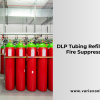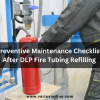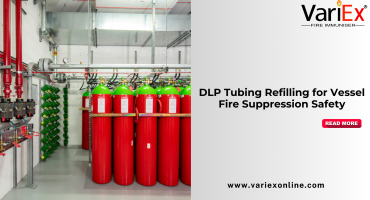![]()
Fire Immuniser
+91-7829629111
Email: info@variex.in
Varistor Technologies Pvt. Ltd.
Block-1, First Floor, Ardente Office One, Hoodi Circle, ITPL Main Road, Bengaluru, Karnataka 560048, IN
Fire NOC Building Height
Fire safety is a critical aspect of building design and construction. One of the key considerations when it comes to fire safety is the height of the building. To ensure occupant safety and facilitate firefighting, building height regulations in Fire NOC consider factors like equipment, evacuation, and local fire department capabilities. This article aims to explore the factors that determine the allowable building height as per Fire NOC regulations.
Determining factors for building height
Several factors come into play when determining the allowable building height as per Fire NOC regulations. Understanding these factors is crucial for architects, developers, and building owners to ensure compliance with fire safety standards.
1. Firefighting equipment and capabilities: A building's height directly affects firefighters' effectiveness. Fire departments require equipment like ladders and hoses to reach high points. Availability and placement of firefighting tools impact allowable height.
2. Occupant evacuation: In case of a fire emergency, the safe and timely evacuation of occupants is of paramount importance. The time required for occupants to evacuate a building increases with its height. Fire NOC regulations factor in evacuation time, considering staircase numbers, width of corridors, and provisions for emergency exits. These regulations aim to prevent congestion and ensure smooth evacuation, reducing the risks associated with excessive building height.
3. Structural fire safety: As a building increases in height, the potential for fire spread and structural damage also increases. Fire NOC regulations specify minimum standards for fire resistance and protection of structural elements. Use fire-rated materials, barriers, and compartments to prevent or delay fire and smoke spread between floors and compartments. The structural integrity of the building is a critical factor in determining the allowable height.
4. Water supply: Adequate water supply is essential for firefighting operations. Sufficient water sources, like tanks or reliable mains, impact allowable height. Water supply system capacity and pressure are crucial for firefighting effectiveness.
5. Access and egress: Fire NOC regulations also encompass aspects related to access and egress. This involves the provision of suitable roads or driveways for fire engines to reach the building and maneuver effectively. Clear access paths, parking restrictions, and proper signage ensure that emergency vehicles can quickly reach the scene of a fire. The size, layout, and design of the building site are also factors that impact the allowable building height.
Compliance with Fire NOC regulations
To obtain a Fire NOC, building plans and designs must demonstrate compliance with the relevant regulations pertaining to building height. This involves meticulous planning and coordination among architects, structural engineers, fire safety consultants, and other relevant stakeholders.
Compliance requires detailed drawings and specifications for firefighting systems like sprinklers, fire alarms, and smoke extraction. These systems are necessary to control and detect fires promptly, mitigating the risks associated with increased building height. The installation of fire escapes, emergency lighting, and signage also forms an integral part of compliance.
Fire department officials conduct site inspections at different construction stages to verify compliance with approved plans and specifications. Non-compliance with Fire NOC regulations can result in penalties, fines, or even the suspension of occupancy permits.
Conclusion
Fire NOC guidelines for building height prioritize occupant safety and firefighting effectiveness. Factors considered include firefighting equipment, evacuation, structural safety, water supply, and access. Compliance with these regulations ensures that buildings meet specified safety standards, minimizing the risks associated with fire emergencies. Architects, developers, and building owners must adhere to regulations for safer environments and protect assets from fire hazards. Prioritizing fire safety in design can reduce the impact on lives and property.
Frequently Asked Questions
Q: What is Fire NOC?
Fire NOC stands for Fire No Objection Certificate. The fire department or fire service authority of a particular region issues this document to certify that a building or facility meets the necessary fire safety requirements and regulations.
Q: Why is Fire NOC important for building height?
Fire NOC for building height ensures compliance with fire safety regulations, considering factors like building height, occupancy, fire-resistant materials, firefighting equipment, and evacuation measures. Obtaining a Fire NOC is mandatory to ensure the safety of the occupants and to prevent fire accidents.
Q: Are there any restrictions on building height for Fire NOC?
Yes, there are restrictions on building height for Fire NOC. The fire department establishes guidelines on maximum building height, considering factors like firefighting infrastructure, water supply, fire truck accessibility, and evacuation procedures. To ensure effective implementation of fire safety measures in emergencies, authorities place these restrictions.
Q: How is the building height calculated for Fire NOC?
To calculate the building height for Fire NOC, measure the vertical distance from the average ground level to the topmost part of the building that can be occupied. This can include the roof level, the highest floor, or any other structure that is accessible or habitable. Measure the height in meters or feet, depending on the unit of measurement used in the region.
Q: Can the building height be increased after obtaining a Fire NOC?
Generally, it is not advisable to increase the building height after obtaining a Fire NOC. Any changes or modifications to the building's height or structure may require re-evaluation and re-approval from the fire department. It is important to consult with the relevant authorities and obtain the necessary permissions before making any alterations to the building height.
Final Say
At VariEx.in , we excel in navigating the intricacies of Fire NOC processes. Our expertise extends to designing, installing, inspecting, and rectifying automatic sprinkler systems. With our proficient in-house team, we offer comprehensive fire sprinkler services tailored to your needs, ensuring both quality and affordability.
Whether your project is extensive or compact, we stand ready to fulfill your Fire NOC requirements. To initiate a Fire NOC consultation or explore how our services can enhance the safety of your premises, reach out to us online or contact us at 7829629111. We are committed to delivering reliable solutions for your fire safety needs.
"WHAT YOU CAN READ NEXT"
 Read more +24 November 2023 in Fire Extinguisher
Read more +24 November 2023 in Fire ExtinguisherWhat types of fire extinguishers are available for different fire classes?
 Read more +11 July 2025 in Fire Suppression
Read more +11 July 2025 in Fire Suppression







